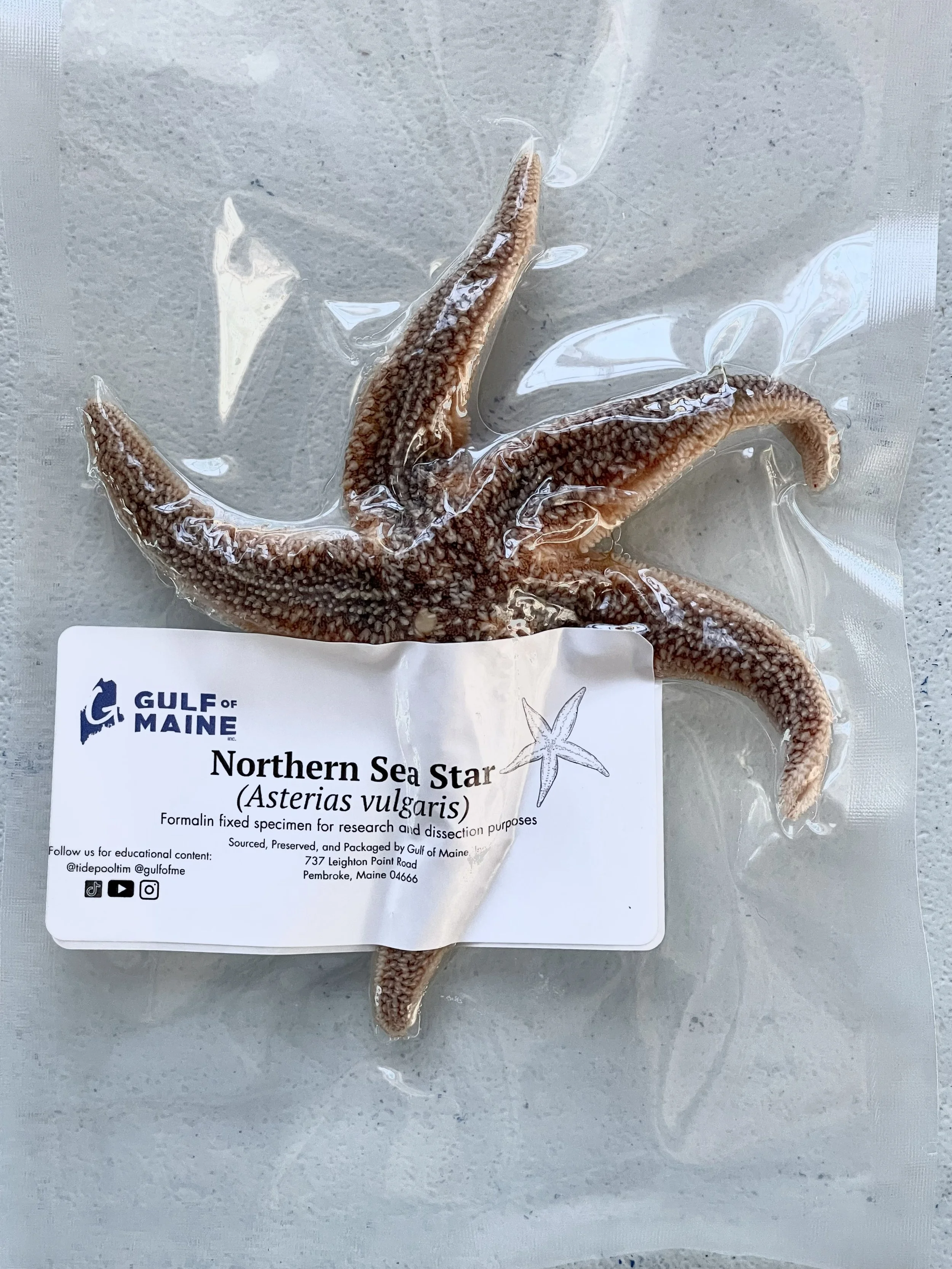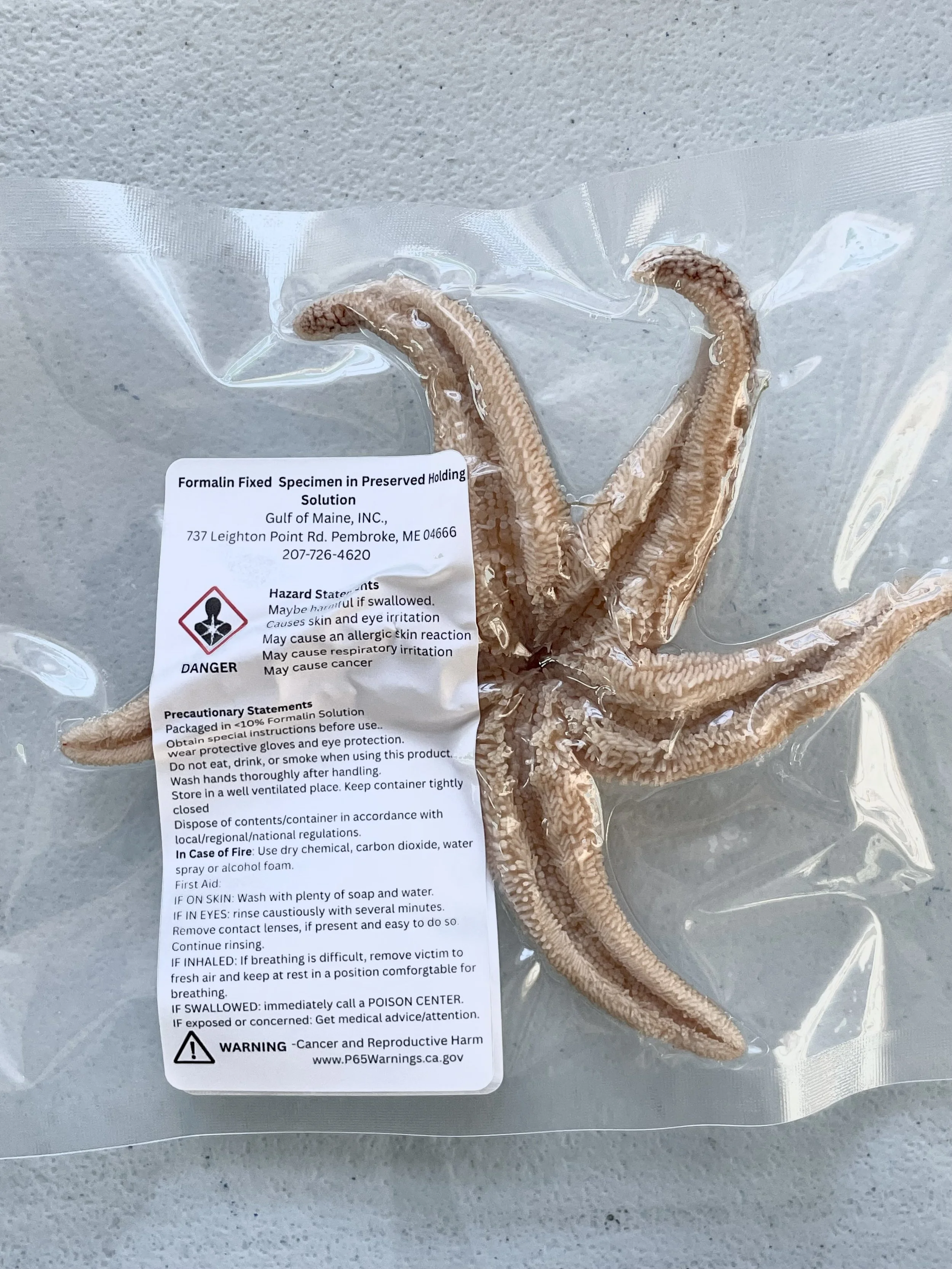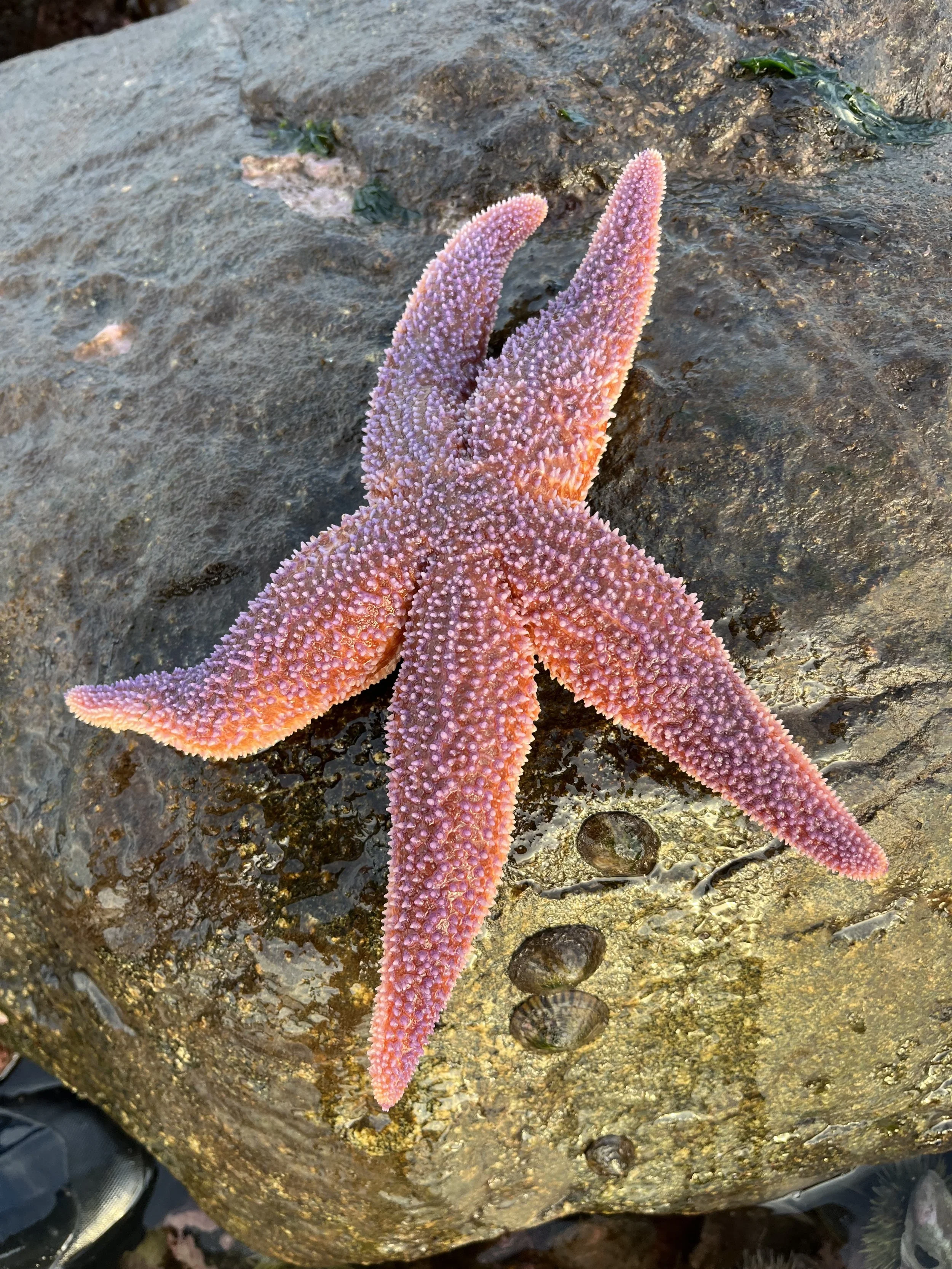 Image 1 of 4
Image 1 of 4

 Image 2 of 4
Image 2 of 4

 Image 3 of 4
Image 3 of 4

 Image 4 of 4
Image 4 of 4





Northern Sea Star (Asterias Vulgaris) 5"-8", Formalin-Preserved Specimen for Dissection, Marine Biology, Classroom & Lab Study
Item Includes: 1 vacuum sealed preserved northern sea star, free shipping included
Echinoderm Anatomy – Preserved Northern Sea Star (Asterias vulgaris): High-quality formalin-preserved sea star specimen for studying marine Preserved Northern Sea Star (Asterias vulgaris) — Marine Invertebrate Anatomy Specimen
Item Includes: 1 vacuum-sealed preserved Northern Sea Star (Asterias vulgaris)
Shipping: Free shipping included
The Northern Sea Star (Asterias vulgaris) is an essential marine invertebrate specimen for studying echinoderm anatomy, tube feet locomotion, stomach eversion, and arm regeneration. Each specimen is sustainably hand-collected from Maine’s coastal waters and preserved in formalin to maintain its anatomical structure for years of educational use.
This preserved starfish provides an engaging, hands-on learning experience for students and researchers exploring marine biology, oceanography, and comparative anatomy. Perfect for classroom dissections, homeschool kits, and museum educational displays, it demonstrates the remarkable adaptations of echinoderms — from their radial symmetry to their unique water vascular system.
Key Educational Features
Invertebrate Anatomy Study: Examine external and internal features of a true echinoderm, including the mouth, stomach, ambulacral grooves, and tube feet.
Hands-On Marine Biology Learning: Ideal for marine biology, dissection, or comparative anatomy labs.
Fascinating Traits: Sea stars move with hundreds of suction-tipped tube feet, extend their stomachs to digest prey externally, and can regenerate lost arms. Each arm also contains an eye spot that detects light.
Ready-to-Use Educational Specimen: Preserved in formalin for long-term durability and clarity. Each specimen is classroom-ready and individually sealed.
Sustainably Collected: Ethically sourced by Gulf of Maine, Inc., with a focus on educational and ecological responsibility.
Common name: Northern sea star
Scientific name: Asterias vulgaris
Locations: Shallow coastal waters, attached to rocks
Seasonality: Available year-round
Colors: Red, brown, purple, green
Size: 6” – 8”
Collected: By hand
Quantity: Sold by the each
Note: Each specimen is unique. Natural variations in size, color, and appearance should be expected.
Item Includes: 1 vacuum sealed preserved northern sea star, free shipping included
Echinoderm Anatomy – Preserved Northern Sea Star (Asterias vulgaris): High-quality formalin-preserved sea star specimen for studying marine Preserved Northern Sea Star (Asterias vulgaris) — Marine Invertebrate Anatomy Specimen
Item Includes: 1 vacuum-sealed preserved Northern Sea Star (Asterias vulgaris)
Shipping: Free shipping included
The Northern Sea Star (Asterias vulgaris) is an essential marine invertebrate specimen for studying echinoderm anatomy, tube feet locomotion, stomach eversion, and arm regeneration. Each specimen is sustainably hand-collected from Maine’s coastal waters and preserved in formalin to maintain its anatomical structure for years of educational use.
This preserved starfish provides an engaging, hands-on learning experience for students and researchers exploring marine biology, oceanography, and comparative anatomy. Perfect for classroom dissections, homeschool kits, and museum educational displays, it demonstrates the remarkable adaptations of echinoderms — from their radial symmetry to their unique water vascular system.
Key Educational Features
Invertebrate Anatomy Study: Examine external and internal features of a true echinoderm, including the mouth, stomach, ambulacral grooves, and tube feet.
Hands-On Marine Biology Learning: Ideal for marine biology, dissection, or comparative anatomy labs.
Fascinating Traits: Sea stars move with hundreds of suction-tipped tube feet, extend their stomachs to digest prey externally, and can regenerate lost arms. Each arm also contains an eye spot that detects light.
Ready-to-Use Educational Specimen: Preserved in formalin for long-term durability and clarity. Each specimen is classroom-ready and individually sealed.
Sustainably Collected: Ethically sourced by Gulf of Maine, Inc., with a focus on educational and ecological responsibility.
Common name: Northern sea star
Scientific name: Asterias vulgaris
Locations: Shallow coastal waters, attached to rocks
Seasonality: Available year-round
Colors: Red, brown, purple, green
Size: 6” – 8”
Collected: By hand
Quantity: Sold by the each
Note: Each specimen is unique. Natural variations in size, color, and appearance should be expected.
